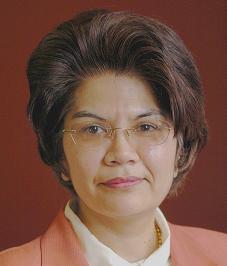| News, Media, and Teaching Religion |
![PDF-NOTE: Internet Explorer Users, right click the PDF Icon and choose [save target as] if you are experiencing problems with clicking.](http://rsnonline.org/templates/rsntemplate-smallmasthead/images/pdf_button.png) |
 |
Editor: Tazim R. Kassam, Syracuse University
In her article “Americans get an ‘F’ in Religion” (Mar 7, 2007), Cathy Grossman of USA Today writes: “Sometimes dumb sounds cute: Sixty percent of Americans can’t name five of the Ten Commandments, and 50 percent of high school seniors think Sodom and Gomorrah were married.” She was reporting on Stephen Prothero’s new book, Religious Literacy: What Every American Needs to Know — And Doesn’t (Harper San Francisco: 2007). Prothero argues that although religion plays a salient role in national and international events, Americans are not even conversant with their own religions history and traditions. His students, for instance, are regularly stumped by questions such as “Name the Four Gospels” and “What is the Golden Rule?” — let alone “What is Ramadan?” This isn’t news to most religion scholars in the United States. But what is interesting is that it’s newsworthy for Grossman, and, if dumb is cute, even amusing. If anything, Prothero’s point is that dumb is dangerous, and has truly terrible consequences. Juxtaposed with religious illiteracy, however, is a popular culture that is suffused with religious symbols, and a political establishment that readily deploys language laden with biblical references. Wading into this stupefying mixture of ignorance and bliss, duly amplified by digital networks beyond our wildest imagination, are religion professors in the classroom. With the arrival of the electronic age, truly profound shifts have taken place in the way students learn. On the one hand, they consume a burgeoning diet of wireless data instantaneously delivered through their laptops, iPods, cell phones, and TiVos; on the other, this intensely saturated and limitless data stream of text, sound, and moving image provides little guidance on how to evaluate its reliability or significance. It is an irony that students, and most Americans, are oblivious not only to the history of religions, but also of world cultures and international affairs despite instant access to the knowledge of the world at their fingertips. “News” itself often means little to students. In their experience, it occupies the same virtual space as the World Wide Web, CNN Headline News, reality TV, and video games. A disquieting example of the melding of the visual effects of primetime news broadcasts and that of blockbuster movies is the fact that video stores in Canada reported a steep increase in rentals of terrorist movies after 9/11 (see this article). Indeed, technology has advanced so fast that students can literally produce their own “news” or vlogs, and broadcast it via YouTube and MySpace. An emerging trend is lifelogging, namely, documenting every moment of one’s life using audio recorders, digital video cameras, GPS tracking systems, and other surveillance devices. Using the news to teach religion thus offers an opportunity to engage students to think critically about their own understanding of what constitutes news, and to develop their ability to distinguish between fact, fiction, argument, and interpretation, as well as to extend their horizons beyond narcissistic infotainment. When students analyze how religion is reported in the news media, how this impacts public opinion, and how religious communities also generate and manipulate news media, they get involved with the study of religion more actively as seekers, and hopefully producers, of reliable knowledge. Contributors to this issue of Spotlight describe various ways that they have used the news media as an entry point for students to appreciate the complexity of religion(s), and to acquire religious literacy. |


 Tazim R. Kassam
Tazim R. Kassam